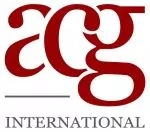ACG International's Managing Partner, Edith Nordmann, was approached by Het Financiële Dagblad (FD) to write a leading article in today's supplement on the European Green Deal.
This is the translation of the original article. To view the original article, follow this link:
Europe, the first fully climate-neutral continent – wish or necessity?
No one has failed to notice that at your coffee-to-go you have to pay extra for the disposable cup for which you did not have to pay anything extra until 1 July last. This extra fee is intended to discourage consumers from using disposable packaging that contains plastic. The measure, an implementation of the European Single-use plastic directive (SUP directive), should help the green European transition. It should achieve a reduction in plastic litter and is one of the measures from the European Green Deal, a roadmap by the European Commission to make the European Union climate neutral by 2050.
The European Union is committed to a holistic and cross-sectoral approach to ensure that all relevant policy areas contribute to the ultimate climate target. This means that Europe wants to achieve net zero emissions of greenhouse gases. The ambition is for Europe to become the world's first climate-neutral continent.
The package includes several initiatives around climate, environment, energy, transport, industry, agriculture and sustainable finance, which are closely intertwined.
One component is packaging.
Globally, at least 320,000 products are packed every second.
Each European produces an average of 180 kg of packaging waste per year.
Packaging is the temporary integration of an external function and a product to enable its use.
All those packed products are eventually unpacked again – elsewhere – and stripped of their packaging (Pack- Use – Empty). This results in empty packaging, usually in a different location from where the product was packed.
The European Commission (EC) published new proposals on 30 November 2022 with the Packaging Regulation (PPWR) to take steps on packaging recycling including on labelling, communication, collection, sorting and reusability.
The Netherlands, the EU's recycling leader after Belgium, is pushing for stricter restrictions by also banning plastic packaging around personal care products (such as soap and detergent), and plastic film around smoking products, leaflets and magazines.
If the PPWR is adopted, this European law will apply immediately to all EU member states once it comes into force (unlike a directive that only sets an end goal).
Whether other member states will go for it as fervently as the Netherlands will be seen at the vote.
The desire to reduce waste is undoubtedly there and consumers are becoming increasingly aware of their carbon footprint.
To make a real impact, however, smart thinking and action is needed at every point in the cycle: In the choice of materials for packaging by the producer (at the so-called "Front End"), the choice of product by the consumer and the joint discipline of "Collect and Control" after unpacking the product and finally the follow-up at the Back End of the process (where CO2 emissions come into play when destroyed or reused).
Packaging waste has increased by more than 20% in the EU over the past 10 years and is expected to increase by another 19% by 2030 if no measures are taken.
We are all familiar with the 2017 photo, taken by photographer and naturalist Justin Hofman, showing a seahorse in the ocean near the island of Sumbawa in Indonesia, clinging to a bright pink plastic cotton swab.
"Seahorses are universally loved," Hofman says of the photo. "When people look at the photo, they switch emotions, from 'happy, cute seahorse' to devastated by what humans are doing to the planet. Visually, the photo is easy to read. It speaks to everyone."
If we stick to the seahorse and the non-degradable bright pink plastic cotton swab, voluntary choices should also be easier to achieve goals faster:
Bring your own cup to the coffee-to-go and save not only 15 cents but also the environment. International airports already display water taps at the gates where travellers can fill their own bottle.
Own responsibility combined with laws and regulations and awareness that we are all better off, will hopefully ensure that we all do our bit for a greener Europe.
The content of this article is intended to provide a general guide to the subject matter. Specialist advice should be sought about your specific circumstances.

